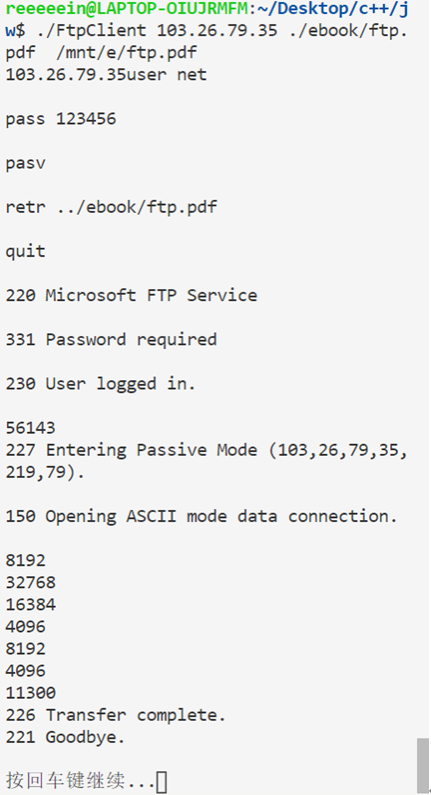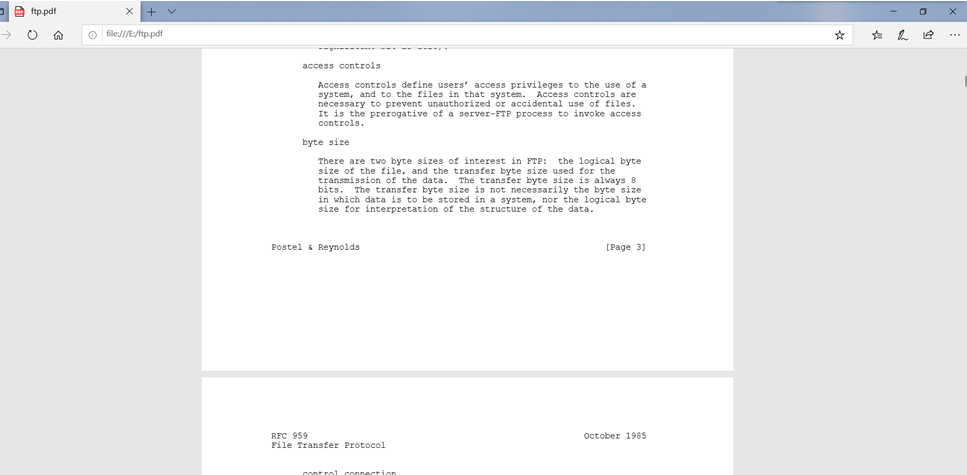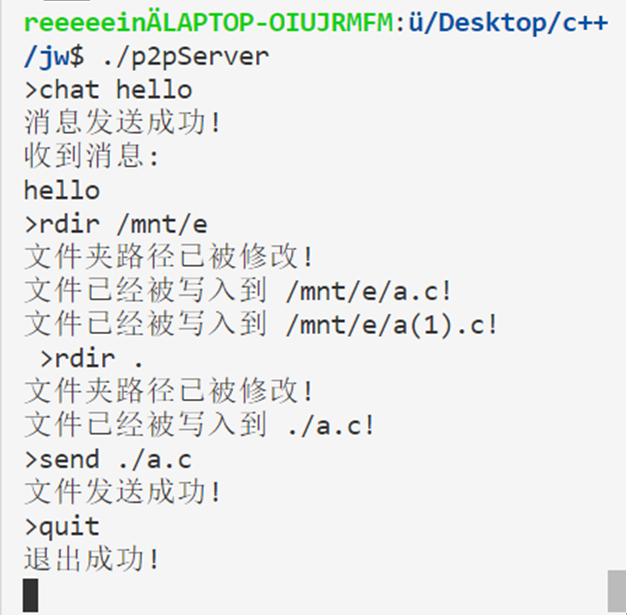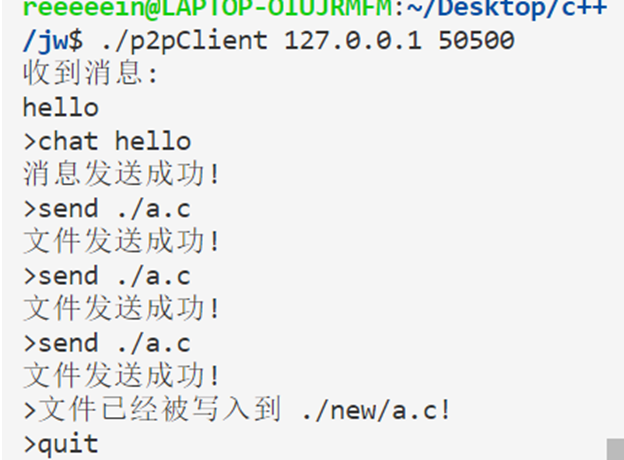1
2
3
4
5
6
7
8
9
10
11
12
13
14
15
16
17
18
19
20
21
22
23
24
25
26
27
28
29
30
31
32
33
34
35
36
37
38
39
40
41
42
43
44
45
46
47
48
49
50
51
52
53
54
55
56
57
58
59
60
61
62
63
64
65
66
67
68
69
70
71
72
73
74
75
76
77
78
79
80
81
82
83
84
85
86
87
88
89
90
91
92
93
94
95
96
97
98
99
100
101
102
103
104
105
106
107
108
109
110
111
112
113
114
115
116
117
118
119
120
121
122
123
124
125
126
127
128
129
130
131
132
133
134
135
136
137
138
139
140
141
142
143
144
145
146
147
148
149
150
151
152
153
154
155
156
157
158
159
160
161
162
163
164
165
166
167
168
169
170
171
172
173
174
175
176
177
178
179
180
181
182
183
184
185
186
187
188
189
190
191
192
193
194
195
196
197
198
199
200
201
202
203
204
205
206
| #include <netdb.h>
#include <stdlib.h>
#include <sys/types.h>
#include <sys/socket.h>
#include <stdio.h>
#include <netinet/in.h>
#include <arpa/inet.h>
#include <unistd.h>
#include <string.h>
#include <error.h>
#include <pthread.h>
#include <semaphore.h>
#include <bits/stdc++.h>
#define BUFLEN 20000
#define FILE_SIZE 1001000
#define FILE_NAME_LEN 300
using namespace std;
map<string, int> mp;
char dest_folder[100]="./new";
ofstream out;
sem_t my_semaphore;
struct FileStruct
{
char fileName[300];
long long fileSize;
};
long long getFileSize(char *fileName)
{
FILE *fp = fopen(fileName, "r");
if(fp==NULL)return -1;
fseek(fp, 0, SEEK_END);
size_t size = ftell(fp);
fclose(fp);
return size;
}
char *getFileName(char *pathName)
{
char* tem=pathName;
while (*tem != '\0')
tem++;
while (*tem != '/' && tem!=pathName)
tem--;
return tem==pathName?tem:tem+1;
}
void input(char *buf)
{
fgets(buf, BUFLEN, stdin);
int len = strlen(buf);
buf[len - 1] = '\0';
}
void Unpack(struct FileStruct *fileStruct, char *file_content, char *folder_name)
{
char Full_name[FILE_NAME_LEN];
sprintf(Full_name, "%s/%s", folder_name, fileStruct->fileName);
FILE *file = fopen(Full_name, "wb");
fwrite(file_content, sizeof(char), fileStruct->fileSize, file);
return;
}
void add_suffix(char *new_filename, int occur_time, char *old_filename)
{
char *tem = old_filename;
while (*tem != '\0')
tem++;
while (*tem != '.' && tem != old_filename)
tem--;
if (tem != old_filename)
{
*tem = '\0';
sprintf(new_filename, "%s(%d).%s", old_filename, occur_time, tem + 1);
*tem = '.';
return;
}
else
{
sprintf(new_filename, "%s(%d)", old_filename, occur_time);
return;
}
}
void *client_recv(void *in)
{
int my_sock = (long)in;
char *buf = (char *)malloc((BUFLEN + 1) * sizeof(char));
while (1)
{
int c1 = recv(my_sock, buf, BUFSIZ, 0);
if (c1 == -1 || c1 == 0)
{
printf("接收消息错误!\n");
return NULL;
}
if (c1 <= 300)
{
buf[c1] = '\0';
printf("收到消息:\n%s\n", buf);
}
else
{
char file_name[FILE_NAME_LEN];
char full_file_name[FILE_NAME_LEN];
memcpy(file_name, buf, FILE_NAME_LEN);
sem_wait(&my_semaphore);
if (mp.count(string(file_name)))
{
char new_file_name[FILE_NAME_LEN];
add_suffix(new_file_name, mp[string(file_name)], file_name);
strcpy(file_name, new_file_name);
}
sprintf(full_file_name, "%s/%s", dest_folder, file_name);
mp[string(file_name)]++;
sem_post(&my_semaphore);
out.open(full_file_name, ios::out);
out.write(buf + sizeof(FileStruct), strlen(buf + sizeof(FileStruct)));
printf("文件已经被写入到 %s!\n", full_file_name);
out.close();
}
}
}
int main(int argc, char *argv[])
{
const char *host = "127.0.0.1";
char *service = "50500";
struct sockaddr_in sin, fsin;
char buf[BUFLEN + 1];
int sock, ssock, alen;
int cc;
pthread_t thread_handle;
sock = socket(PF_INET, SOCK_STREAM, IPPROTO_TCP);
memset(&sin, 0, sizeof(sin));
sin.sin_family = AF_INET;
sin.sin_addr.s_addr = inet_addr(host);
sin.sin_port = htons((unsigned short)atoi(service));
bind(sock, (struct sockaddr *)&sin, sizeof(sin));
listen(sock, 5);
ssock = accept(sock, (struct sockaddr *)&fsin, (socklen_t *)&alen);
sem_init(&my_semaphore, 0, 1);
pthread_create(&thread_handle, NULL, client_recv, (void *)ssock);
while (1)
{
input(buf);
if (strcmp(buf, ">quit") == 0)
{
printf("退出成功!\n");
break;
}
else if (strncmp(">chat", buf, 5) == 0)
{
send(ssock, buf + 6, strlen(buf + 6), 0);
printf("消息发送成功!\n");
}
else if (strncmp(">send", buf, 5) == 0)
{
struct FileStruct f;
f.fileSize = getFileSize(buf + 6);
if(f.fileSize==-1){
cout<<"文件名错误!\n";
continue;
}
strcpy(f.fileName, getFileName(buf + 6));
char *File_pack = (char *)malloc(sizeof(char) * FILE_SIZE);
memcpy(File_pack, &f, sizeof(FileStruct));
FILE *tem_file = fopen(buf + 6, "r");
char *content = (char *)malloc(f.fileSize);
fread(content, f.fileSize, 1, tem_file);
fclose(tem_file);
memcpy(File_pack + sizeof(FileStruct), content, f.fileSize);
send(ssock, File_pack, sizeof(FileStruct) + f.fileSize, 0);
printf("文件发送成功!\n");
}
else if (strncmp(">rdir", buf, 5) == 0)
{
sem_wait(&my_semaphore);
strcpy(dest_folder, buf + 6);
mp.clear();
sem_post(&my_semaphore);
printf("文件夹路径已被修改!\n");
}
}
pthread_join(thread_handle, NULL);
close(sock);
printf("按回车键继续...");
getchar();
}
|




